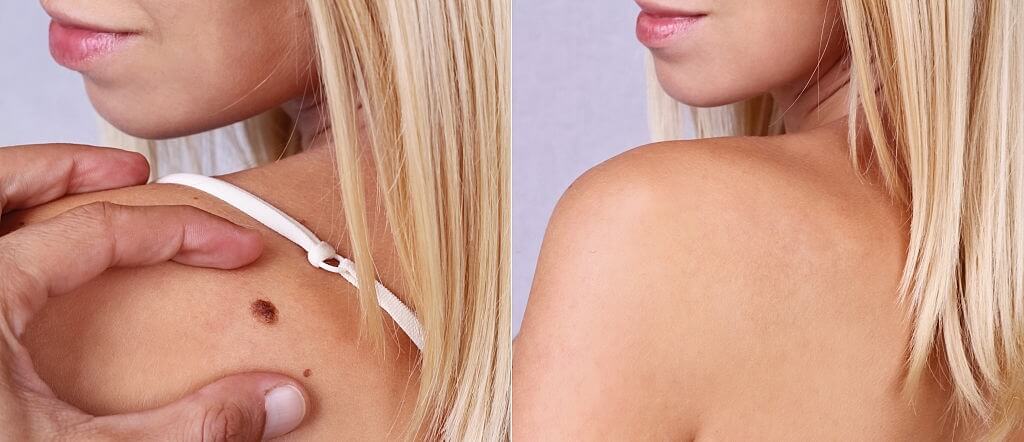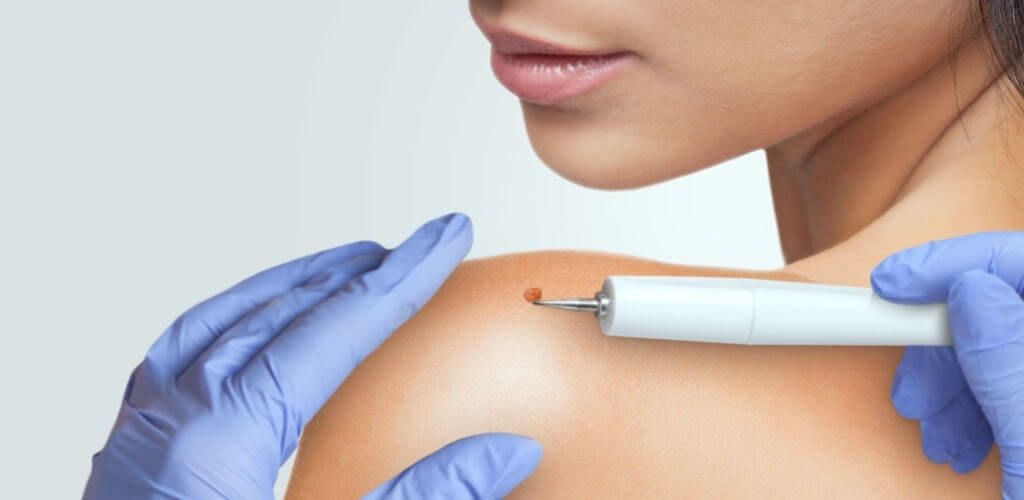
Moles (nevi) are pigmented growths on the skin that occur when melanocytes, or pigmented skin cells, develop in clusters. Moles are very common and come up at different developmental stages in a person’s life, usually until around the age of 40. After this, many moles will fade away over time. Atypical moles are those that appear to be unusual in shape and color and are different from all the other moles a person has. Atypcial moles, also called dysplastic nevi, are a marker of increased risk for the development of skin cancer. Dermatologists recommend getting a mole checked checked if it appears different, grows larger, or changes in color in contrast to other moles on your body.
Warts are skin growths that are caused by a type of virus called the human papillomavirus or HPV. There are more than a hundred types of HPV known to infect the skin, usually through an area of broken skin. HPV causes the top layer of skin to grow rapidly and this is what forms the wart. Warts can grow anywhere on the patient’s body and are most common among children and young adults. They usually go away on their own within months or years, but may need professional treatment when they start to spread or become painful.
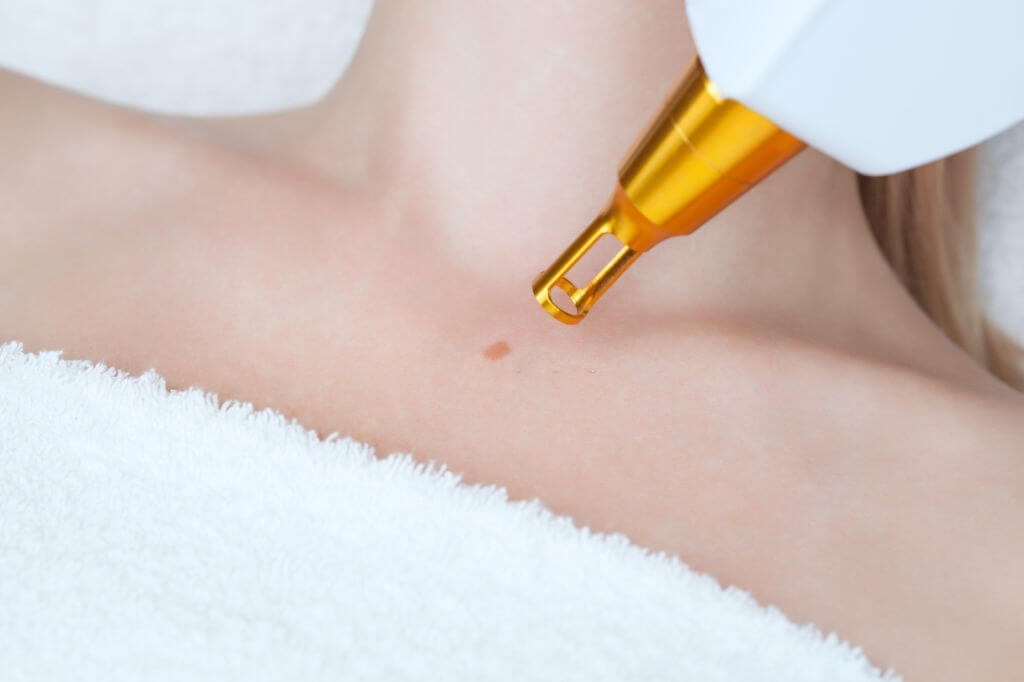
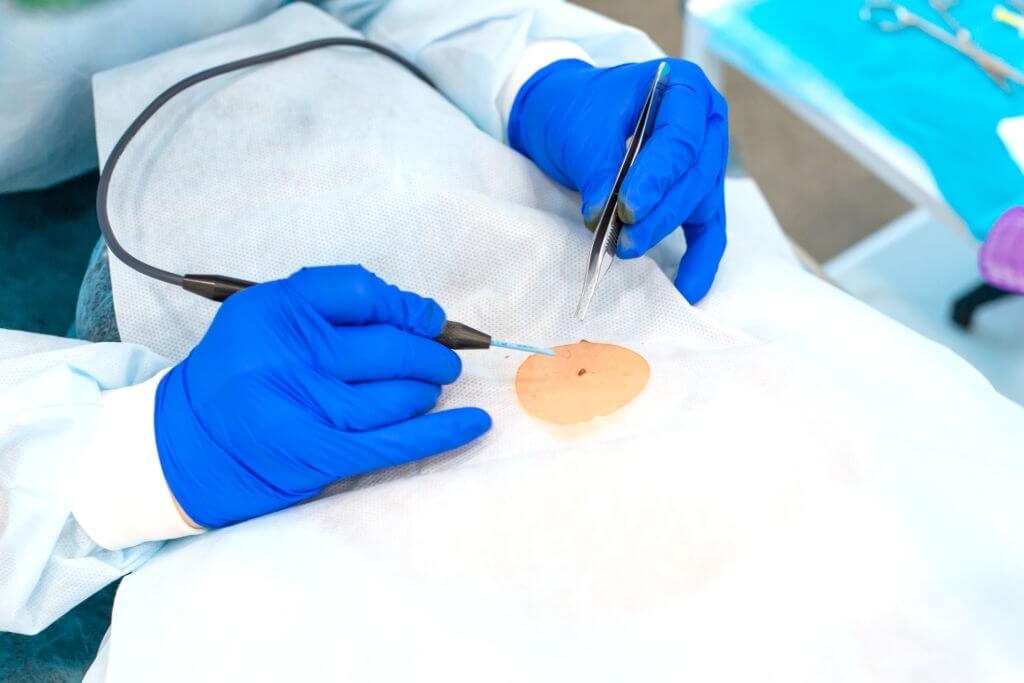
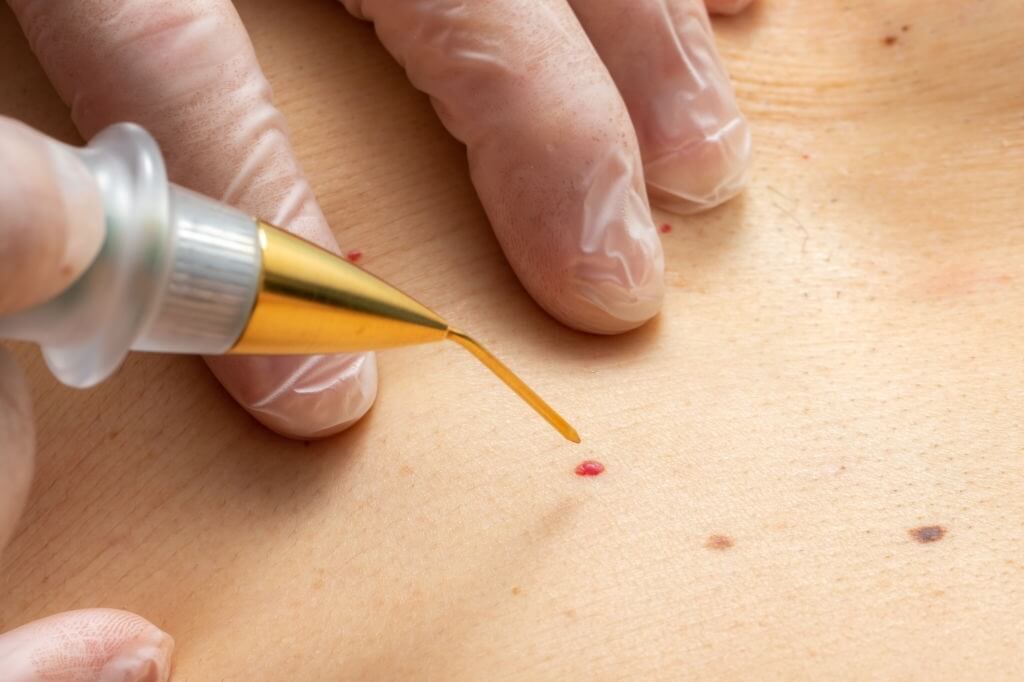
Most moles do not require any sort of treatment, but dermatologists recommend the removal of those that bother the patient, are suspicious in their appearance, or show signs of potential skin cancer. To remove the mole, dermatologists will use either a surgical excision or a surgical shave removal. Surgical excision involves cutting out the entire mole and stitching the skin closed afterwards. A surgical shave removal, on the other hand, is when a surgical blade is used to remove the mole with a deep scrape that is not stitched. In either case, the tissue removed will be sent to the skin pathologist for microscopic evaluation.
In general, warts do not need any special type of treatment, but in cases when they become painful and begin to spread to other parts of the body, or the person becomes bothered by the way they look, professional treatment or home treatments may be necessary. Home treatments such as salicylic acid may be obtained without a prescription. Stronger treatments including cryotherapy, electrosurgery, curettage, immunotherapy, or antiviral injections will require you to visit your doctor.
